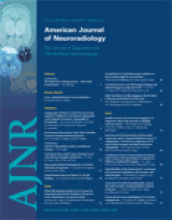Abstract
BACKGROUND AND PURPOSE: Ataxia-telangiectasia (A-T) is an autosomal recessive disorder with characteristic neurodegeneration of the cerebellum. We used MR spectroscopy to test the hypothesis that cerebellar metabolism in A-T patients would be abnormal relative to healthy controls.
METHODS: Twelve adults with A-T and 12 healthy control subjects underwent MR imaging and long-echo time 1H-MR spectroscopy at 3T. Voxels were acquired in the region of the dentate nucleus of the cerebellum and in parietooccipital white matter, and ratios for N-acetylaspartate (NAA), choline (Cho), and creatine (Cr) were calculated.
RESULTS: All of the A-T patients showed marked cerebellar atrophy of the vermis and hemispheres. Two patients showed multiple small foci of hypointensity on T2*-weighted images throughout their brain suggestive of capillary telangiectasia. A further 2 patients had single low-signal-intensity foci. One patient had a tumor, thought to be meningioma radiologically, that was not suspected clinically. No group differences were found in the cerebral spectra, but analysis of the cerebellum revealed significantly lower NAA/Cho and higher Cho/Cr ratios in the A-T patients compared with the controls. There was no difference between groups for the NAA/Cr ratio.
CONCLUSION: The findings suggest increased Cho signal intensity in the cerebellum of adult A-T patients. If this finding is shown through the course of the disease, it may assist in the differentiation of early A-T from other forms of ataxia and provide a marker for monitoring treatment efficacy.
- Copyright © American Society of Neuroradiology












